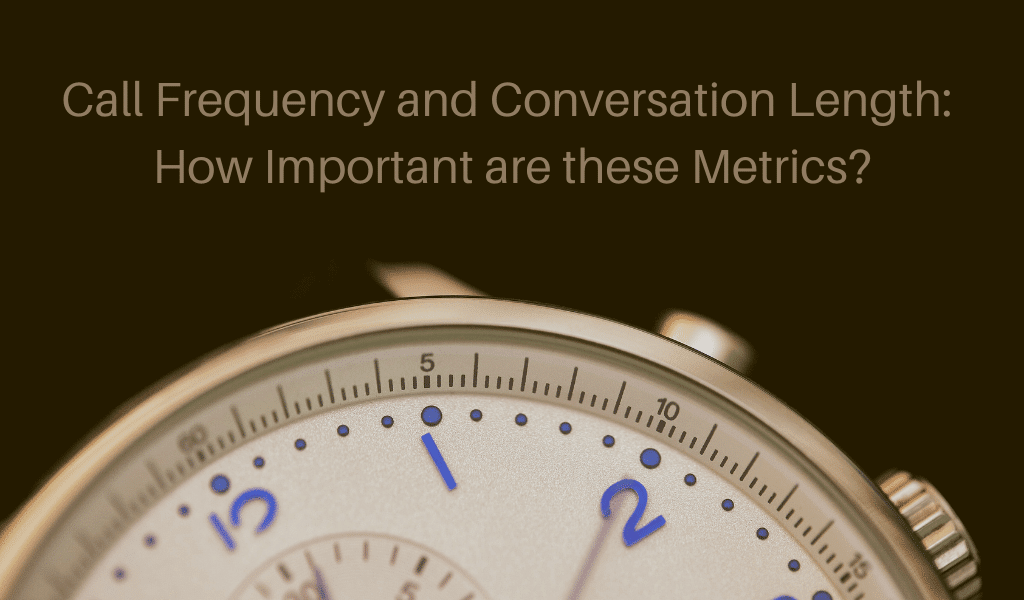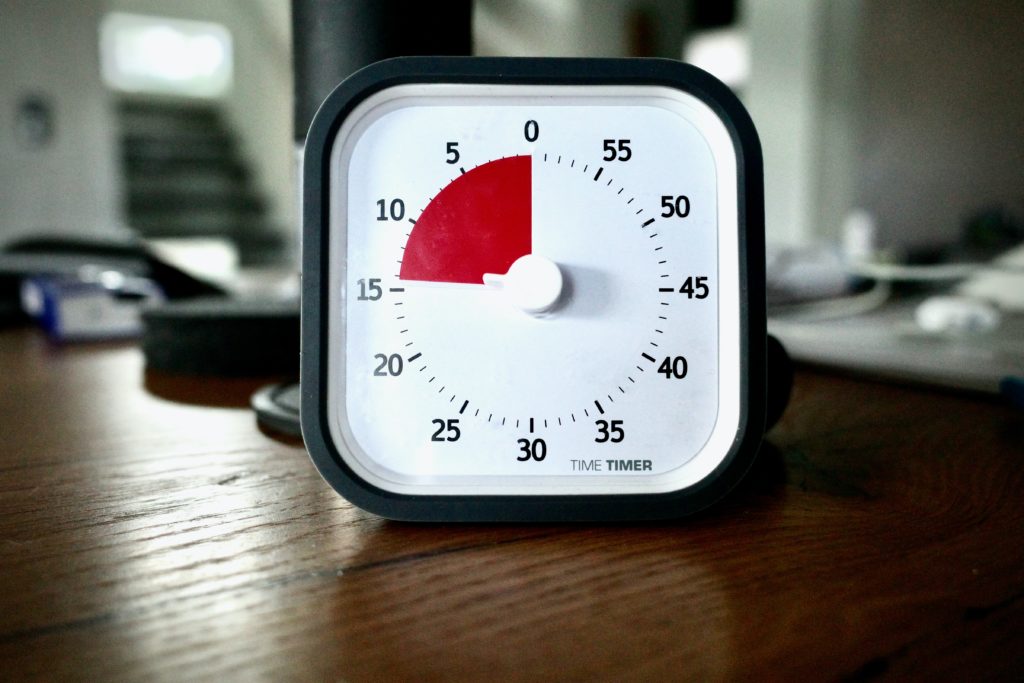Does more frequent calling or longer conversation length improve your sales numbers? Let’s find out.
There are a lot of metrics you can track in phone sales. Some, like average monthly sales, are easy to follow and have an obvious purpose. Other metrics, like conversation length and call frequency, can fly under the radar at times. There’s also a bit of debate around them. How many calls do you need to make before you let that lead go and move on? How long should you be on the phone with someone?
For that matter, how do you track conversation length? Is it the total time you spend talking to a customer over multiple calls, or do you only track the time on each individual phone call? Are these metrics even worth monitoring?
Yes. And no. Both, sort of. It’s safe to assume that you can expect longer conversations in industries like real estate, where the purchase price is high. More complex topics, such as life insurance, might require more frequent calls as customers have questions that come up over time.
Maintain customer profiles, automate processes, and reach more customers with Call Logic’s call management software. Check out a free demo to see what we’re all about!
A closer look at call frequency and conversation length
There is some conflicting data about the importance of call frequency in phone sales. Still, most sources suggest it takes an average of 5 to 8 calls to establish a relationship with a potential customer. A study commissioned by marketing charts points out that 54% of salespeople say that “it takes at least 5 attempts to get an initial meeting, and 10% believe it takes more than 10” tries to successfully set up a meeting with a prospect.
What does this mean for phone sales? In short, don’t give up. Keep making those calls and leaving messages if you need to.
The other side of call frequency is contacting your current customers. This serves at least two purposes. First, regular contact keeps you fresh in their mind and represents good customer service, making customer retention more likely. Additionally, this gives you an opportunity to upsell a new product or service.
Of course, you don’t want to call too often, nor do you want to go for the upsell on every call. How often that is will depend again on your industry. In real estate, you may not need to contact your clients very often after a sale. A few check-ins in the months after the sale may be sufficient, along with keeping them on your holiday mailing list.
In contrast, a financial advisor could potentially call quarterly or even every month to suggest new tax tips, ask if the client has concerns about working towards their financial goals, and so on.
What about conversation length? This is one of those strange metrics where, somehow, we’ve gotten the idea that short conversations are better. Make it quick and get on to the next customer. This is the quantity vs. quality approach and, like call frequency, can change a lot depending on both the industry and what your sales rep is doing on that call.
Longer conversations do not necessarily equate to more sales. In truth, conversation length isn’t something you can look at out of context. Instead, what’s important is the quality of those conversations and the results.
A sales rep who talks too much could very well have long conversations and fail to build a relationship because they didn’t learn anything about the customer. Your best sales rep may only need a few minutes on a cold call to set up a meeting. More complicated transactions will require longer conversations.
Where does this leave us in looking at call frequency and conversation length? Ultimately, you need to look at your own data. If you use software like Call Logic, this is simple. You can see how many calls a sales rep makes, how long the conversations are, and what the results are.
A high number of short calls that don’t eventually end with your goal of gaining a sale or setting an appointment could mean you’re calling the wrong people or leaving messages that don’t get callbacks. The same can be said of longer calls that don’t eventually lead to a sale or customer retention.
And you could say the same thing about calls that do end in a sale. To further complicate things, your conversation length may change over time with each customer, with the “get-to-know-you” process taking more time, and later check-ins being short and sweet.
In other words, call frequency and conversation length are just two metrics that can help you hone in on a better sales strategy.
A word about talk time and efficiency
It’s important to point out that conversation length, whether on the shorter or longer side, is a very different metric than efficiency. Efficiency included things like how organized your contact list is or how quickly you can scrub numbers on the Do Not Call list (which is instantaneous if you use Call Logic).
Efficiency is about having your customer notes all in one place, and even more ideally, right there on a pop-out screen when you make the call, so you have the information you need right in front of you.
To get the most detailed information and to improve your overall sales strategy, look at all these metrics. They all play a role in making your business more efficient and profitable. The important step is to look at them in context and take from them what you need.
Don’t go another day without finding out how Call Logic can change the way you do business. Accept your free demo today to learn more!

